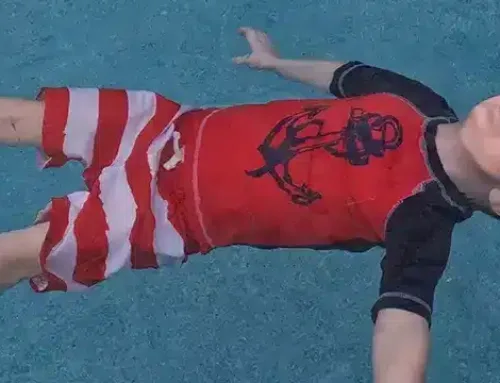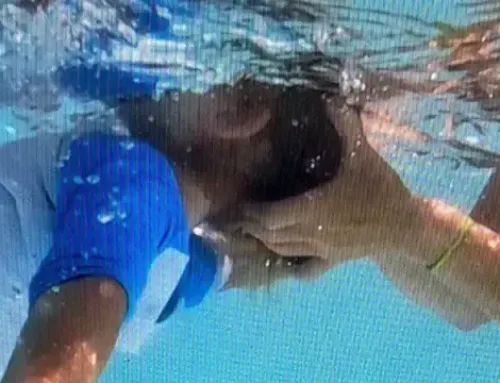October 16, 2023
Infant Swimming Resources vs Traditional Swim Lessons

Swimming lessons can mean different things to different people. Little kids may splash around in the water with their friends, blowing bubbles and kicking, all while claiming they have been in swim lessons. Students may take lessons to learn different strokes and techniques, making them stronger swimmers as they try out for school teams and sports. Even adults may attend lessons to learn how to swim for the first time or improve as they train for a big race. Just as all of these “lessons” are different from one another, Infant Self-Rescue is different as well.
Traditional Swim Lessons
Traditional swim lessons are what many parents today received as children. They would attend local community centers or YMCA’s for weeks over the summer, lining up with other children to learn skills for 45 minutes at a time. These lessons usually teach basic skills, including kicking, floating, holding breath, and basic swim strokes. As students progress through different levels, different skills are paired together to learn new strokes, techniques, and methods. Depending on the class, there may be anywhere from 3 to 12 children, each waiting for their turn with the instructor to learn and practice the skill. Different swim schools may add on additional lessons, including basic water safety and boating safety.
Infant Self-Rescue
For starters, these lessons are one-on-one and limited to 10 minutes at a time. This focused attention allows your child to maximize their time with our certified instructors while considering their shorter attention span. By concentrating on the instruction, they can actually learn more in this time span. We also work with your child 5 days a week, and it may take 4-6 weeks for this skill to be fully learned. In the end, additional safety measures will be in place because your child will learn basic survival techniques first and foremost, rather than as an addition at the end of a series of lessons. Even 6-month-old infants can learn to roll over and float on their backs as they await rescue from an adult. As their physical development progresses, swimming techniques are added, with the reminder to roll over, float, and rest as needed.
H2O Survival Swim School
At H2O Survival Swim School, we believe there is a purpose for traditional swim instruction to develop the basics that are already in place. Learning new strokes for sport and exercise, as well as improving methods, can be great for physical and mental development. However, H2O Survival Swim School places an emphasis on self-rescue techniques first. We want your child to be a problem solver in the water, knowing how to rescue themselves if they are in a dangerous situation. Once the basics are learned and your child can walk, we would work on additional swimming skills in accordance with the ISR method, progressing “until they can reach safety at the steps, side of the pool, or shoreline.”
If your child is 6 months or older, contact us to register for their lessons. Teaching these methods year-round will help add an extra layer of safety and provide a secure foundation for older children ready to learn swimming techniques. H2O Survival Swim School is ready to help protect and teach your child.







